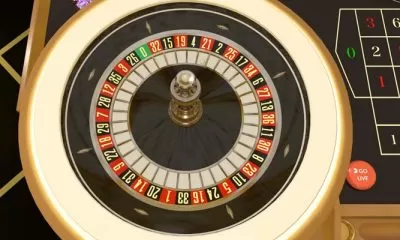Casino
Learn how to play spades, a beginner’s guide to the card game
Published
5 months agoon
By
Sam Jonson
Card games have been a beloved pastime activity for generations, with friends and families alike enjoying the incredible thrill of strategic thinking derived from mere 52 cards. And one game that has maintained its position among one of the most popular card games is the Spades card game.
Whether you consider the need for incredible teamwork or the ability to correctly assume the power of the cards in your hands, it is one game that will surely have you on the edge of your seats, carefully planning your next move. If you have played the spades card game online, you would already know how fun and thrilling it is. But it is even more fun when played with friends and a real deck of cards rather than engaging in spades online free games with strangers. So, let us tell you all about the fundamentals of the game and how you can play it the next time your friends and family gather around.
Understanding the Basics of the Game
Before learning how to play the spade card game, you need to understand what the objective of the game is. This will help you understand the actual rules of the game much easier.
The Goal of Spades
The basic goal of Spades is not to win every single round, it is to accurately assume how many rounds you and your teammate can win in every game. The more correct your assumption, the higher your points, even if you lose all the rounds. This is why, having a thorough understanding of not only your own cards but the cards your opponents potentially have is crucial.
Requirements
All you need to play spades is a deck of 52 cards and 4 players split up into 2 teams. While you can play individually as well, the classic version of the game involves teamplay among 2 individuals in 2 teams each.
Ranking of Cards and Suits
To get a grasp of Spades, a thorough understanding of the ranking of not only the cards but also the suits is important. When it comes to the cards, the ranking from highest to lowest is as follows:
- Ace (Highest)
- King
- Queen
- Jack
- 10
- 9
- 8
- 7
- 6
- 5
- 4
- 3
- 2 (Lowest)
Furthermore, as the name of the game suggests, the suit of spades in cards decks trumps every other suit, regardless of the ranking of the cards. In this way, the ranking of the 13 Spades cards, which is how many spades are in a deck of cards, in the above order comes first, followed by the same ranking for all other suits. This means that the Ace of spade card in 52 cards holds the most power and must be played strategically.
Preparing for the Game
Now that you understand the basics of the game, you need to prepare for the game to actually begin. For the preparation, you need to decide on the winning points, deal the cards, and then place the trick bids.
Decide on Total Winning Points
Before the beginning of the game, you also need to decide the winning points for the game. This is so that the game comes to an end once the winning team reaches the specified points. While you can play in any increment of 100, the classic Spades game is plates for 500 points, with the game ending once a team collectively reaches 500 points or more.
Deal the Cards
After deciding on the points, you also need to select a dealer. It doesn’t matter who the dealer is, so you may use any method or game to assign the role. The dealer then removes the Joker from the deck, and shuffles the cards thoroughly, dealing the cards face-down one at a time starting from the player on their left. Once all 52 cards have been dealt, each player should have 13 cards with them. Once all cards have been dealt, players can organize the cards by placing them from highest to lowest ranking, keeping in mind that Spades trumps the other suits.
Make Contract Bids with Your Teammate
After all players have had a good look at their cards and have an understanding of how many low value and high value cards they have, teammates can place bids for the number of tricks they will win in the game. A trick refers to a round of 4 cards placed by each player for each round, and the highest value card placed wins the round. The combined bid placed by teammates becomes their bid and they need to win at least that many tricks throughout the game. You can place a bid of any value, from 0 to 13, depending on your analysis of your cards.
Playing the Game of Spades
Once the bids have been placed, the game can officially begin. So, here is how you need to play the game.
Playing the First Card
The player sitting to the left of the dealer starts the game by playing the first card. The first player needs to play any card of their choice in any suit other than spades. The other players need to follow the same suit when placing their cards on the table, unless they don’t have a card of the same suit. In this case, they can choose a card from a different suit.
For instance, if Player 1 plays clubs, then Players 2, 3, and 4 also need to play clubs. However, if Player 2 does not have any clubs cards, then they can play hearts, but Player 3 needs to follow the original suit and play clubs, not hearts.
Breaking Spades
If you don’t have any card in the suit started by the first player, then you can also play spades. This act of initiating the play of spades is called “breaking spades,” and once it has been done, the other players are allowed to start the next tricks with spades cards.
Winning the Trick
A trick can be won if you play the highest value card for the round. However, the highest value card needs to be either of the starting suit that Player 1 chose or a spades card. For example, if you don’t have any cards of the starting suit (for instance, clubs) and choose to play a card of the remaining 2 suits (in this case, hearts and diamonds), then even if you play an Ace, you will not win because the card you played was not of the starting suit.
The player who has played the highest ranking card in the starting suit or the highest ranking spade wins the trick, and can take the 4 cards on the table. These groups of 4 cards cannot be incorporated into your hand and need to be placed into these sets of 4 in front of you on the table to help with counting later on.
One thing to be kept in mind here is that you cannot play a spade card if you have playable cards in the starting suit.
Playing the Next Trick
The next trick starts with the player who won the previous round, and if the spades have been broken, then they can start with a spade right away. This pattern continues till either all 13 tricks have been played or a team has reached the target score determined before the spade game started.
Counting Scores
A tally of scores needs to be kept to identify when a team has won by reaching the determined total scores. And there are a lot of factors that affect the scores in a game of spades, both increasing and reducing your scores for an exciting and thrilling game. But before you add these factors to determine the final scores, you need to count the number of tricks you and your teammate won. Note the number of tricks won by each team and also keep the bids placed by each team handy before moving on to the actual counting.
If Bid Has Been Met
If the bid has been met, then the number of bids placed needs to be multiplied by 10 to gain the score for those bids. For example, if you and your teammate collectively placed a bid for 5 tricks, and you succeeded in winning 5 out of the 13 tricks, then you get a score of 5 x 10 = 50.
If you have crossed the number of bids you placed, then the extra wins are called overtricks and they are also counted into your total. For example, if you and your teammate collectively placed a bid for 5 tricks, but your team won 8 tricks, then the total score your team earned in the game is 50 for the 5 successful bids, and 3 extra points for the 3 overtricks, bringing your total scores for the game to 53.
If Bid Has Not Been Met
It is very likely that you will not be able to meet your required tricks, and you fall short of it. In such a case, your team earns no points and a score of 0 is recorded for the game. For example, if you bid 5 tricks, but were able to secure only 3 tricks collectively, then your team earns 0 points.
Nil Bids and Sandbags
Another variable in this comes in the form of nil bids and sandbags. Nil bids refer to bids for 0 tricks before starting the game. This is a great situation since a successful nil bid can give you a major head start. If you had correctly assumed that you would not be able to win any tricks and you actually ended up winning 0 tricks, then your team earns 100 points for the correct guess.
However, if you place a nil bid but end up unsuccessful by winning even 1 trick, then your team gets 100 points deducted from the total scores for the round. Another situation that can lead you to losing points is if you end up with 10 or more overtricks, which is when you get a Sandbag penalty. For example, if you placed a bid for 2 tricks, but end up winning 12 or all 13 tricks, then you get penalized in the form of a 100 point deduction.
Winning the Game
Based on the outcomes of the above scoring system, the total scores for each system are calculated. The team that manages to reach the predetermined score first wins the game.
Conclusion
The best thing about the game, whether you play it in person or decide to go for a spade online game, is that you don’t even have to win every trick, all you need to do is correctly assume how many you are likely to win, even if that is 0. So, hone your prediction skills, or sit down with a crystal ball that tells the future, and ace your way through the game of spades with your friends.
You may like
-
High Low Game: How and Why to Play, Variations, and Strategies
-
Live Speed Baccarat: Game Rules, How to Play, and Strategies
-
A Comprehensive Guide to Play Poker Online with Friends
-
How to Play Roulette: Everything You Need to Know about Casino Roulette Game
-
Play Online Roulette Successfully: 6 Proven Strategies to Help You Win
-
Learn How to Play 3 Card Brag














